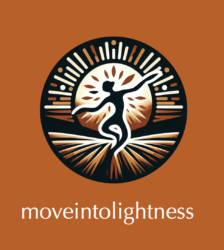Introduction
Many enthusiastic dancers are held back not by a lack of desire, but by deep-seated self-doubt and anxiety. It’s a common story on dance floors everywhere. You may know the steps, but stepping out with confidence? That’s a different dance altogether.
Dance is more than an art—it’s a conversation between body and mind. Many dancers struggle with an internal dialogue laced with self-doubt. Traditional dance training often misses addressing this silent adversary.
For many, the dance floor is an arena where battles with self-doubt are fought. The negative beliefs that “I’m not good enough,” “I can’t keep up,” or “I’ll never be as graceful as them” are frequent thoughts that echo in the minds of dancers. It’s a silent struggle that, for too long, traditional dance training has failed to address. But what if the key to unlocking true dance potential lies not in endless rehearsals but in transforming those very beliefs?
Let’s delve into the transformative journey from self-doubt to confidence, made possible through the understanding of neuroscience. What if you could fundamentally change your belief about your dance abilities through a neuroscience-backed approach.
The Problem: Self-Doubt in Dancers
The negative belief: “I’m not cut out for this.” The story is all too familiar: dancers facing their reflection with a mix of hope and despair. Each falter, each misstep, whispers, “Maybe I’m not cut out for this.” This negative belief is the ball and chain that restricts growth, reinforcing a cycle of doubt every time a step doesn’t land perfectly.
The journey begins with a negative self-perception. Dancers, both novices and those with years of experience, often harbor a fundamental belief that they lack the inherent ability to dance well. This belief is self-limiting, deeply rooted, and reinforced by traditional methods that focus solely on physical techniques without considering the dancer’s mental, emotional and neurological state. By neglecting the emotional and neurological components that play a critical role in a dancer’s overall performance, self-doubt can creep into every corner of a dancer’s practice—from hesitating to join a new dance class to avoiding solo performances.
The Transformation: A Neuroscience Revelation
The catalyst for change is the revelation of how deeply our thoughts and beliefs are intertwined with our physical abilities. Neuroscience shows that our brains are ever-changing, capable of forming new connections and patterns.
Our program introduces dancers to the concept of neuroplasticity through a series of targeted exercises. These are not just physical drills, but mental and emotional practices that challenge the old narrative. Dancers begin to experience small wins – a smoother turn, a more rhythmic step, less tension, and more joy in movement. Each success tells the dancer: “I am improving, and I can be a dancer.” When dancers feel the more powerful mental state, progress in their physical performance occurs the old beliefs have less influence.
Our techniques are about creating a new mindset not from the external cognitive shift, but from the internal neurological shift. They are designed not just for the body, but for the brain, intertwining nervous system resetting techniques with physical movement, dancers begin to see the evidence of their improvement, their brain chemistry starts to align with a more positive outlook on their abilities.
The revelation that our neural pathways are malleable and can be rewired forms the foundation of the transformation. When dancers learn that coordination, rhythm, and emotional expression are skills that can be developed rather than innate talents, the door to change swings wide open.
The Positive Belief: “I Am a Capable and Confident Dancer”
With each session, the belief shift becomes more pronounced. “I am a capable and confident dancer” starts as a whisper and grows into a mantra. This is not a baseless affirmation, but a statement backed by personal experience and neurological change. It’s a belief built on the progress seen in the mirror, felt in the body, and understood in the mind. This self-perception, rooted in personal accomplishment and scientific understanding, becomes the new rhythm to which dancers move.
Conclusion: Embracing Your Dance Potential
The journey from self-doubt to confidence is not just about changing how we dance; it’s about reshaping how we think about our potential to dance. This transformation, grounded in the science of neuroplasticity, enables dancers to not only move with more grace but also to stand with newfound confidence.
